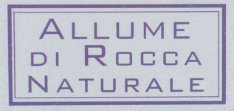![]()

Allume di Rocca. Egyptians reportedly used the coagulant alum as early as 1500 BC to reduce the visible cloudiness (turbidity) in the water. Alum (known as turti/sphatika in local languages) was also used for water treatment by Indians for thousands of years. Ayurveda describes sphatika as an astringent, haemostatic, antiseptic. It has anti-inflammatory, anti-pyretic and antibiotic properties.
Alum in block form (usually potassium alum) is used as a blood coagulant. Styptic pencils containing aluminium sulfate or potassium aluminium sulfate are used as astringents to prevent bleeding from small shaving cuts. Alum blocks are commonly found in pharmacies in India. Alum may also be used in depilatory waxes used for the removal of body hair, or applied to freshly waxed skin as a soothing agent.
In the 1950s, men sporting crewcut or flattop hairstyles sometimes applied alum to their front short hairs as an alternative to pomade. When the hair dried, it would stay up all day.
Alum's antiperspirant and antibacterial properties also contribute to its traditional use as an underarm deodorant. It has been used for this purpose in Europe; Mexico; Thailand, where it is called Sarn-Som; throughout Asia; and in the Philippines, where it is called Tawas.

__20264.original.png)
